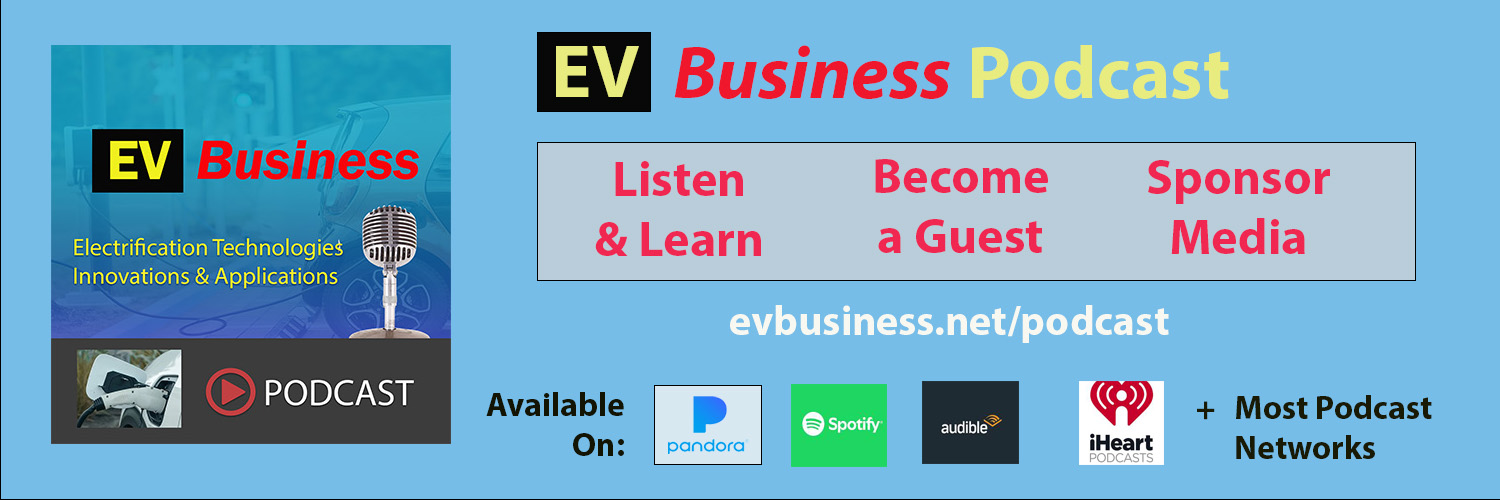Supercapacitors are rapid energy storage devices that can be used to improve EV acceleration, regenerative braking efficiency and reduce battery charging and discharge strain. Electric vehicles (EVs) face challenges in managing power demands, energy efficiency, and battery longevity. Supercapacitors address these issues by providing rapid energy storage and discharge, improving acceleration, regenerative braking efficiency, and reducing strain on EV batteries. With high capacitance and energy density, they store and deliver power instantly, while their ultra-fast charging capability enhances regenerative braking. Their long cycle life, low equivalent series resistance (ESR), and hybrid integration with batteries optimize performance and durability. Compact, lightweight, and safe, they enhance EV reliability. Understanding supercapacitors is key to maximizing EV efficiency and sustainability.
EV and Charging Supercapacitors

EV Vehicle and Charging System Supercapacitor Manufacturer List
AVX Corporation (a subsidiary of Kyocera Corporation) – A leading manufacturer of advanced electronic components, including supercapacitors, catering to automotive and industrial applications.
CAP-XX Limited – An Australian company specializing in the design and manufacture of high-performance supercapacitors and energy storage solutions.
Cornell Dubilier Electronics, Inc. – A leading manufacturer of capacitors, including supercapacitors, serving automotive, aerospace, and telecommunications.
Eaton – Eaton provides EV charging infrastructure solutions, including Level 2 and DC fast chargers, designed for residential, commercial, and industrial applications.
Elna Co., Ltd. – Designs, manufactures, and sells aluminum electrolytic, solid conductive polymer, and electric double-layer capacitors.
EPCOS AG (a TDK Group Company) – Develops, manufactures, and markets electronic components, including supercapacitors, focusing on fast-growing technology markets.
KEMET Corporation (a subsidiary of Yageo Corporation) – Manufactures a broad selection of capacitor technologies, including supercapacitors, serving automotive and telecommunications.
LOXUS – A Finnish company pioneering in the development of high-performance hybrid supercapacitors, offering efficient power management solutions.
LS Mtron Ltd. – A South Korean company manufacturing supercapacitors for various applications, including automotive and renewable energy sectors.
Maxwell Technologies (a part of UCAP Power) – Specializes in energy storage and power delivery solutions, including ultracapacitors for automotive and heavy transportation applications.
Murata Manufacturing Co., Ltd. – A global leader in the design and manufacture of electronic components, including supercapacitors.
Nanoramic Laboratories – Specializes in advanced energy storage and thermal management technologies, including high-performance supercapacitors.
Nawa Technologies – A French company specializing in advanced energy storage solutions, particularly ultracapacitors, leveraging innovative carbon nanomaterials.
Nichicon Corporation – A Japanese manufacturer of capacitors, including supercapacitors, catering to automotive and consumer electronics.
Nippon Chemi-Con Corporation – A Japanese company specializing in capacitors, including supercapacitors, for automotive and industrial applications.
Panasonic Corporation – A multinational electronics company offering a range of products, including supercapacitors, for automotive and industrial applications.
Rubycon Corporation – Specializes in the manufacture of capacitors, including supercapacitors, serving various industries such as automotive and consumer electronics.
Skeleton Technologies – A European leader in ultracapacitor and energy storage systems manufacturing, known for its graphene-based ultracapacitors.
Vishay Intertechnology, Inc. – A global manufacturer of discrete semiconductors and passive electronic components, including supercapacitors.
Zoxcell – A global leader in the design, development, and manufacture of solid-state hybrid graphene supercapacitors.
EV Vehicle and Charging System Supercapacitor Key Features and Capabilities
Capacitance & Energy Density
Capacitance and energy density define how much energy a supercapacitor can store and how efficiently it can deliver that energy in short bursts. Higher capacitance allows for more energy storage, which is crucial for handling peak power demands during acceleration and regenerative braking. Energy density plays a significant role in supplementing the EV battery by providing rapid energy delivery when needed.
Charging Time
Supercapacitors have significantly faster charge acceptance compared to conventional batteries, allowing them to quickly absorb and release energy. This feature is especially useful for regenerative braking, where energy recovered from braking can be efficiently stored and reused, improving overall vehicle efficiency and reducing wear on the primary battery.
Cycle Life & Durability
Supercapacitors are known for their high cycle life, often lasting hundreds of thousands to millions of charge-discharge cycles without significant degradation. This durability makes them an excellent long-term investment, as they require less frequent replacement compared to traditional batteries, reducing maintenance costs and enhancing EV reliability.
Equivalent Series Resistance (ESR)
Lower ESR improves the efficiency of energy transfer by reducing internal resistance, minimizing power losses, and preventing excessive heat generation. A lower ESR value enhances the performance of supercapacitors, making them ideal for high-power applications such as rapid acceleration and regenerative braking.
Form Factor & Size
The physical dimensions of a supercapacitor must align with the design constraints of the EV while maximizing energy storage and performance. Compact and modular supercapacitors allow for easier integration into different vehicle architectures, ensuring optimal use of available space.
Hybrid Supercapacitor Technology
Some modern supercapacitors combine traditional fast-charging properties with battery-like energy density, enhancing their ability to store more energy while maintaining rapid charge-discharge capabilities. This hybrid approach bridges the gap between conventional capacitors and lithium-ion batteries, offering the best of both technologies for improved EV efficiency.
Integration with Battery Systems
Supercapacitors must seamlessly integrate with existing lithium-ion or solid-state battery systems to improve overall energy management. By handling short bursts of high power, they reduce strain on the main battery, extending its lifespan and improving vehicle performance. This hybrid energy system is particularly beneficial for enhancing EV acceleration and regenerative braking efficiency.
Leakage Current
Leakage current refers to the small amount of current that continues to flow even when the supercapacitor is not actively in use. Low leakage current is essential for maintaining energy efficiency, as high leakage can lead to unnecessary power losses, reducing the overall effectiveness of the energy storage system.
Operational Lifetime
The longevity of a supercapacitor determines how long it can function before performance degradation occurs. Unlike traditional batteries that suffer from capacity loss over time, supercapacitors maintain consistent performance over extended periods. This extended operational life reduces replacement costs and contributes to the overall sustainability of EV technology.
Power Density
Power density measures how quickly a supercapacitor can deliver energy, making it critical for applications that require rapid charge and discharge cycles. High power density ensures that energy is instantly available for acceleration and braking, improving vehicle responsiveness and efficiency.
Safety & Reliability
Safety is paramount in EV systems, and supercapacitors must include built-in protection against overvoltage, overheating, and short circuits. Unlike batteries, they are less prone to thermal runaway, reducing the risk of fire or system failure. Ensuring high reliability enhances the overall safety and longevity of the EV power system.
Self-Discharge Rate
Supercapacitors naturally lose stored energy over time when not in use. A low self-discharge rate is important for maintaining stored energy levels over extended periods, ensuring that power is readily available when needed without excessive energy loss.
Temperature Range
Supercapacitors must operate efficiently in extreme automotive environments, including high-heat conditions and freezing temperatures. A wide operational temperature range ensures consistent performance, making them suitable for various climates and driving conditions without compromising efficiency.
Voltage Rating
The voltage rating of a supercapacitor ensures compatibility with the EV’s electrical system, preventing overvoltage damage and ensuring stable operation. Proper voltage matching is essential for maintaining system integrity and optimizing power distribution throughout the vehicle.
Weight
Lightweight supercapacitors contribute to overall vehicle efficiency by reducing the total mass of the energy storage system. Lower weight translates to better energy efficiency, improved range, and enhanced vehicle performance, making weight optimization a critical factor in supercapacitor selection.
EV Vehicle and Charging System Supercapacitor Glossary
Capacitance (C) – The ability of a supercapacitor to store an electric charge, measured in farads (F). Higher capacitance allows for more energy storage and rapid power delivery.
Cycle Life – The number of charge and discharge cycles a supercapacitor can undergo before its performance significantly degrades. A high cycle life reduces maintenance and replacement costs.
Energy Density (Wh/kg) – The amount of energy a supercapacitor can store per unit mass. Higher energy density enables longer-lasting power supply for EV applications.
Equivalent Series Resistance (ESR) – The internal resistance of a supercapacitor that affects power losses and efficiency. Lower ESR improves energy transfer and minimizes heat generation.
Fast Charging – The ability of a supercapacitor to quickly absorb and release energy, making it ideal for regenerative braking and high-power applications in EVs.
Form Factor – The physical size and shape of a supercapacitor, which must fit within an EV’s design constraints while maximizing performance.
Hybrid Energy Storage System (HESS) – A combination of supercapacitors and batteries used in EVs to optimize energy efficiency, power delivery, and longevity.
Hybrid Supercapacitor (HSC) – A type of supercapacitor that combines characteristics of traditional capacitors and batteries, offering improved energy density with fast charge-discharge rates.
Leakage Current – The small amount of current that flows even when a supercapacitor is not in use, affecting long-term efficiency and standby power consumption.
Operational Lifetime – The duration a supercapacitor can function effectively before significant degradation occurs, typically measured in years or total charge-discharge cycles.
Power Density (W/kg) – The amount of power a supercapacitor can deliver per unit mass, affecting acceleration, regenerative braking, and overall vehicle performance.
Regenerative Braking – A system in EVs that recovers kinetic energy during braking and converts it into electrical energy, which can be stored in supercapacitors for future use.
Safety & Reliability – Features ensuring that supercapacitors operate without risks of overheating, overvoltage, or short-circuiting, enhancing overall EV safety.
Self-Discharge Rate – The rate at which a supercapacitor loses stored energy when not in use. A lower self-discharge rate is beneficial for long-term energy retention.
State of Charge (SOC) – The level of charge stored in a supercapacitor or battery, expressed as a percentage of its total capacity.
Supercapacitor (SC) – A high-power energy storage device with rapid charge and discharge capabilities, used to enhance EV performance, acceleration, and regenerative braking efficiency.
Temperature Range – The range of temperatures within which a supercapacitor can function effectively. A wide temperature range ensures reliable performance in various climate conditions.
Voltage Rating – The maximum voltage a supercapacitor can handle safely. Ensuring proper voltage compatibility prevents damage and optimizes performance.

